Many of the environments of the New Jersey mountains involve erosion from various mountain streams that have carved out the areas topography over thousands of years. These streams and seepages form habitat for various amphibian species, especially the salamanders. Though the diversity of the salamander species is nowhere near as great as in the southern Appalachians, the northern Appalachians still have some nice species of caudates.
A typical mountain stream from northern New Jersey, lined with thick stands of rhododendron. I spent my first day along this stream and similar streams nearby in search of some of the stream dwelling species in the area. Most species at these elevations are Plethodontids, or lungless salamanders, which capitalize on the amount of moisture in the area and breathe through their skin. Some of these species can be absolutely striking, like the Northern Red Salamander.
Northern Red Salamander - Pseudotriton ruber
This beautiful species is found throughout much of the eastern United States, especially in areas where seepages and streams abound. Though common in the mountains of New Jersey, they can also be found in seepage areas within the pine barrens. Red Salamanders can often be found wandering across roadways at night after a heavy rainstorm during the summer months, their bright red coloration is hard to miss on a roadway.
Northern Two-lined Salamander - Eurycea bislineata
Like the Northern Red Salamander, the Northern Two-lined Salamander can also be seen crossing roadways in the summer months after an evening shower, though this species tends to stick to streams more than the Red Salamander. This species is the common "yellow" salamander of the northeastern United States, and can be readily found under flat rocks and other cover along stream edges. But salamanders aren't just restricted to streams in the mountains, they can also be found on wooded slopes.
Northern Slimy Salamander - Plethodon glutinosus
The Northern Slimy Salamander is a striking species which inhabits wooded slopes in the eastern United States and can be extremely abundant in the right habitat. They get their name from the sticky substance which they secrete when handled, it can be extremely difficult to wash off the hands. Juveniles (top photo) are completely black with white spots, while adults (bottom photo) are black with white spots, but tend to have a more gray tail. The tail is extremely fat in this species, and that is because major fat reserves exist in the tail which this species uses up over the course of the winter to survive. Other common salamanders in these areas inlcude Northern Dusky Salamanders and Red-backed Salamanders. Many of the rocky streams in the mountains provide habitat for two protected turtle species, particularly this striking turtle.
Wood Turtle - Glyptemys insculpta
The Wood Turtle is a Threatened species in New Jersey, and is only found in suitable stream habitat with adjacent woodlands in the northern half of the state. This adult female was found walking along a stream bank in the mountains, likely in search of food. Wood Turtles have suffered severe declines in the northeast due to habitat loss, road mortality, and illegal collection for the pet trade. Preserving suitable stream habitat and educating the public is critical for this species long term survival in New Jersey and the rest of the northeast.
Eastern Box Turtle - Terrapene carolina carolina
This striking adult male that was found crossing a road after a heavy afternoon thunderstorm in northern New Jersey. Throughout their range, Eastern Box Turtles suffer from habitat loss and road mortality. And though this species seems to be extremely abundant in New Jersey, it still receives legal protection against collection and harassment and is listed as a Species of Special Concern by the NJ Department of Fish & Wildlife. The highlands of New Jersey are also a haven for several species of snakes.
The Black Rat Snake is a large constrictor which inhabits woodlands in the eastern United States, it is most common in New Jersey in the mountains. I found this monster crossing a mountain road just before dark on a warm evening in June. I also saw several individuals under cover such as tin, boards, and fallen roofing throughout the course of the summer. Seeing snakes on roads was a common occurance this summer, although sometimes you find them in a way that is upsetting.
Black Rat Snake - Pantherophis obsoletus
The Black Rat Snake is a large constrictor which inhabits woodlands in the eastern United States, it is most common in New Jersey in the mountains. I found this monster crossing a mountain road just before dark on a warm evening in June. I also saw several individuals under cover such as tin, boards, and fallen roofing throughout the course of the summer. Seeing snakes on roads was a common occurance this summer, although sometimes you find them in a way that is upsetting.
The copperhead is another snake species which historically had a small range in New Jersey to begin with, and with development and habitat loss has declined significantly. The Copperhead is listed as a Species of Special Concern by the NJ Department of Fish & Wildlife and is protected by law. Most of the individuals I saw this summer were DOR, but I did manage to find a few live specimens.
Northern Copperhead - Agkistrodon contortrix mokasen
The copperhead is a master of camouflage. Lying amongst leaf litter it can be almost impossible to spot even when you're looking for them. Like most North American pitvipers, Copperheads are ambush predators. They will lie motionless until a passing rodent gets too close, and then it's lights out. Because I don't get into their range terribly often, I'm always pleased when I can see one.
One of the toughest things to stomach during my summer in New Jersey were sights like this. The Timber Rattlesnake is an Endangered species in NJ, and two of the greatest threats to its future in the state are road mortality and persecution by humans. Like many venomous species, the Timber Rattlesnake is an extremely misunderstood animal. Most are quite shy, and just want to get away. Yet, many people still hold on to the ignorant belief that these snakes are extremely aggressive and dangerous. Unfortunately, ignorance leads to this sort of scene. This particular snake had been run over in an area where the speed limit is 15 mph. It's rattle had been cut off and it was likely run over intentionally, as these snakes are tough to miss on a road, especially when the speed limit is so low.
As you can see, this was a common sight throughout the summer. The Timber Rattlesnake has an extremely fragmented range in NJ, with one population being restricted to the northern mountains and and even smaller population being isolated to the pine barrens. Though it is clear there is an abundance of Timber Rattlesnakes in the mountains of New Jersey, the fact that almost all of the snakes I observed had been killed on roadways is alarming. Continued monitoring and outreach to the public are essential if this snake is to continue to survive in the state.
Timber Rattlesnake - Crotalus horridus
Timbers come in two distinct color phases in the northeast, yellow and dark. However, there is a lot of variation in the two phases. The snake pictured above is a classic dark phase, with a bit of a chestnut stripe running down its dorsum. The Timbers of the northeast are much different than those I had seen previously in the midwest (Ohio, Indiana, Illinois) and down south in Florida. Timber Rattlesnakes are an integral component of mountain ecosystems, and are a necessary presence for the control of small mammals such as squirrels and chipmunks. New Jersey's mountains gave me a lot of cool encounters and are a beautiful place to visit, I hope to return someday once more.


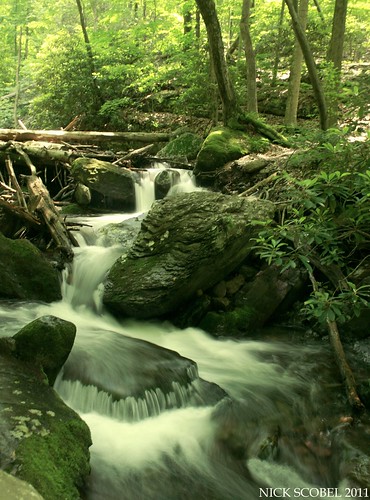
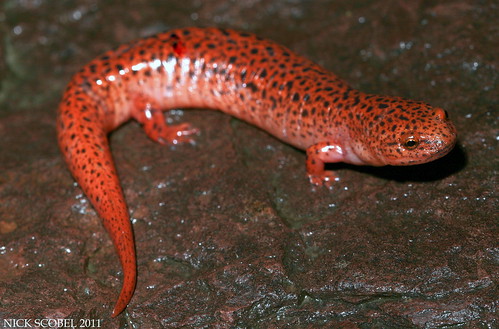
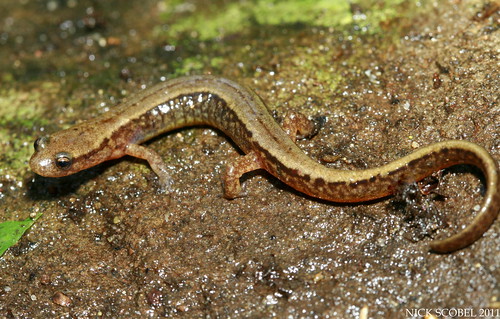
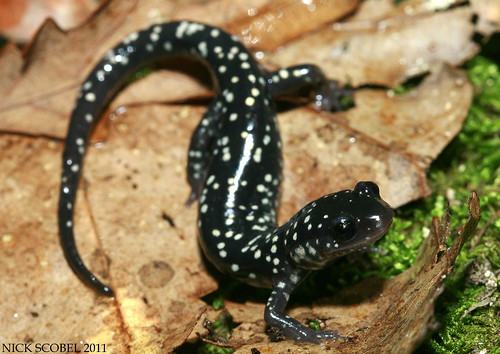
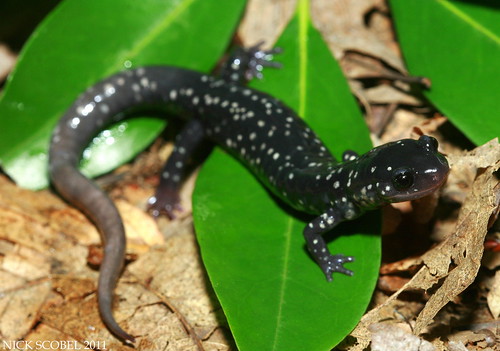
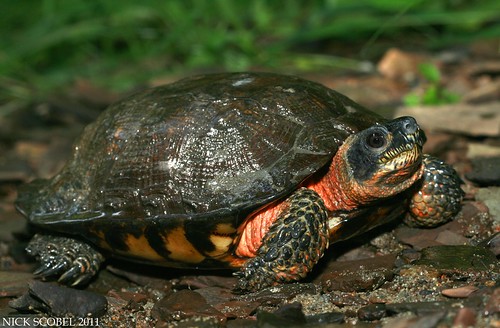


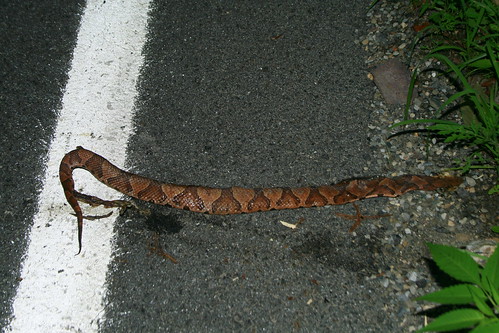
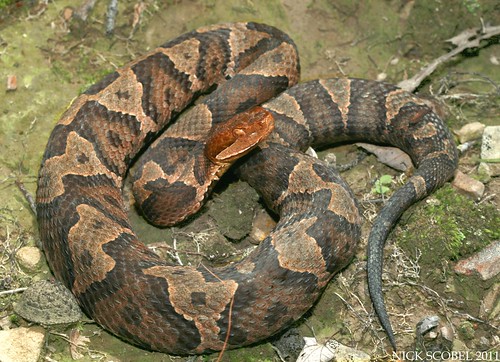


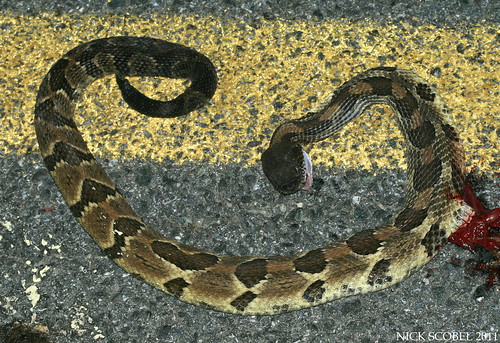

I almost got bit by one of the timber rattle snakes when i was 13 i lifted up a long it rattled and pop out and almost bit me i ran away
ReplyDeleteSuch a shame. Without looking for them, I saw four live timber rattlesnakes while hiking the Appalachian Trail in 2000, three in VA (one in Shenandoah N.P., where I also saw a large dead one) and one in NJ. No copperheads seen in six months, though I bet some saw me!
ReplyDelete